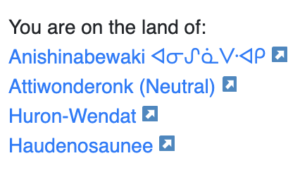It’s Canada Day, but whose land are we really on?
Over the past 10 years, I have watched people get decked out in their red & white attire, waving Canadian flags every July 1. These celebrations always portray Canada as a very inviting place and better still, the perfect country, but we know this is not the complete truth.

For over 153 years, Indigenous communities in Canada have experienced and continue to experience various forms of systemic violence in the hands of different levels of government, the RCMP and, oil and gas companies to name a few. Time and time again, we see Indigenous communities and land protectors demanding basic things we enjoy, like access to clean water only to be faced with legislation like this, which hinders them from speaking up about the injustices their communities still experience. This is why we need to rethink how we chose to celebrate Canada Day.
As settlers who immigrated here and built our lives from scratch, it is valid that we want to celebrate achieving our versions of the “Canadian dream.” However, it is also our responsibility to learn the real histories of where we are. Indigenous communities have been here for thousands of years before this place was ever called “Canada.” Hence, we need to learn about the indigenous communities we reside in, the ones that surround us, the languages they speak, their culture, and so much more.
Native-land.ca is an interactive resource that helps you know the territory you are on, the communities around you, their languages, and their treaties. I encourage you to visit this page today and learn where you are.
I am on the land of the Anishinabewaki, the Attiwonderonk, the Huron- Wendat, and the Haudenosaunee. Whose land are you on?
